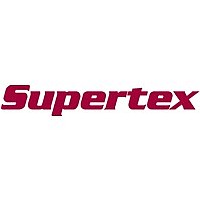HV9989K6-G Supertex, HV9989K6-G Datasheet - Page 7

HV9989K6-G
Manufacturer Part Number
HV9989K6-G
Description
LED Lighting Drivers 3 CH CCM/DCM BOOST LED DRIVER
Manufacturer
Supertex
Datasheet
1.HV9989K6-G.pdf
(12 pages)
Specifications of HV9989K6-G
Rohs
yes
Input Voltage
10 V to 40 V
Maximum Supply Current
4.5 mA
Maximum Operating Temperature
+ 85 C
Mounting Style
SMD/SMT
Package / Case
QFN-40
Minimum Operating Temperature
0 C
Power Dissipation
4000 mW
loop manner. The current references which set the three LED
currents are provided at the REF pins (REF1-3). This refer-
ence voltage is compared to the FDBK voltages (FDBK1-3)
which sense the LED currents in the three channels using
current sense resistors. The HV9989 includes three 1MHz
transconductance amplifiers with tri-state outputs, which are
used to close the feedback loops and provide accurate cur-
rent control. The compensation networks are connected at
the COMP pins (COMP1-3).
The outputs of the op-amps are buffered and connected to
the current sense comparators using 12:1 dividers. The buf-
fer helps to prevent the integrator capacitor from discharging
during the PWM dimming state.
The outputs of the op-amps are controlled by the signal ap-
plied to the PWMD pins (PWMD1-3). When PWMD is high,
the output of the op-amp is connected to the COMP pin.
When PWMD is low, the output is left open. This enables
the integrating capacitor to hold the charge when the PWMD
signal has turned off the gate drive. When the IC is enabled,
the voltage on the integrating capacitor will force the con-
verter into steady state almost instantaneously.
Linear Dimming
Linear dimming can be accomplished in the HV9989 by vary-
ing the voltages at the REF pins. Note that since the HV9989
is a peak current mode controller, it has a minimum on-time
for the GATE outputs. This minimum on-time will prevent the
converters from completely turning off even when the REF
pins are pulled to GND. Thus, linear dimming cannot accom-
plish true zero LED current. To get zero LED current PWM
dimming has to be used. Note that different signals can be
connected to the three REF pins if desired, and they need
not be connected together.
Due to the offset voltage of the short circuit comparator as
well as the non-linearity of the X2 gain stage, pulling the
REF pin very close to GND would cause the internal short
circuit comparator to trigger and shut down the IC. To over-
come this, the output of the gain stage is limited to 125mV
(minimum), allowing the REF pin to be pulled all the way to
0V without triggering the short circuit comparator.
Note: Since this control IC is a peak current mode controller,
pulling the REF pin to zero will not cause the LED current
to go to zero. The converter will still be operating at it mini-
mum on-time causing a very small current to flow through
the LEDs. To get zero LED current, the PWMD input has to
be pulled to GND.
Doc.# DSFP-HV9989
C010913
7
PWM Dimming
PWM dimming in the HV9989 can be accomplished using a
TTL compatible square wave source at the PWMD1-3 pins.
The HV9989 has an enhanced PWM dimming capability,
which allows PWM dimming to widths less than one switch-
ing cycle with no drop in the LED current.
The enhanced PWM dimming performance of the HV9989
can be best explained by considering typical boost converter
circuits without this functionality. When the PWM dimming
pulse becomes very small (less than one switching cycle for
a DCM design or less than a few switching cycles for a CCM
design), the boost converter is turned off before the input
current can reach its steady state value. This causes the
input power to drop, which is manifested in the output as a
drop in the LED current (Figure. 5; for a CCM design).
Figure 5a: PWM Dimming with dimming on-time far
greater than one switching time period
Figure 5b: PWM Dimming with dimming on-time equal to
one switching time period
In the above figures, I
values (PWMD = 100%) for the output current and inductor
current respectively. As can be seen, the inductor current
does not rise enough to trip the CS comparator. This causes
the closed loop amplifier to lose control of the LED current
and COMP rails to VDD.
In the HV9989, however, this problem is overcome by keep-
ing the boost converter ON, even though PWMD has gone
to zero to ensure enough power is delivered to the output.
Thus, the amplifier still has control over the LED current and
the LED current will be in regulation as shown in Figure. 6.
I
I
PWMD
PWMD
INDUCTOR
INDUCTOR
I
I
LED
LED
O
(SS) and I
L
(SS) refer to the steady state
Supertex inc.
www.supertex.com
HV9989
I
I
I
I
O
O
O
L
(SS)
(SS)
(SS)
(SS)












